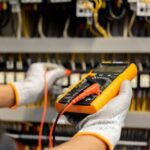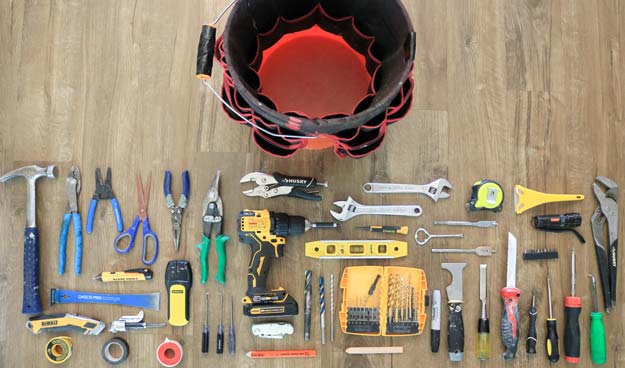Riding a motorcycle in Baraboo provides a fantastic way to experience the beautiful Wisconsin scenery. But unlike car accidents, motorcycle accidents can get complicated, especially when there’s no direct contact between the motorcycle and another vehicle. These “no-contact” accidents can leave motorcyclists injured and confused about who’s responsible.
Figuring out fault in these situations requires understanding specific laws and how a driver’s actions might have caused the accident, even if they never made physical contact. If you’ve been involved in a no-contact motorcycle accident in Baraboo, we understand your challenges.
Consulting experienced Baraboo motorcycle accident attorneys can help you determine who holds liability. Read on to better understand no-contact motorcycle accidents.
Understanding No-Contact Motorcycle Accidents
Imagine this: you’re cruising down the road on your motorcycle when a car cuts you off without warning. You swerve to avoid a collision but end up losing control and crashing. This is a classic example of a no-contact motorcycle accident, where an accident occurs even though there’s no direct physical contact between the motorcycle and another vehicle.
These situations can happen in many ways. A car driver might suddenly change lanes without checking their blind spot, forcing you to take evasive action. Another driver might slam on their brakes unnecessarily, causing you to swerve to avoid a rear-end collision.
The challenge with no-contact accidents is proving who caused them. Without clear-cut evidence of a direct collision, it can be difficult to determine fault. This is where understanding the specific laws and factors that influence liability becomes crucial.
Factors Determining Liability in No-Contact Motorcycle Accidents
No-contact motorcycle accidents can leave you frustrated and unsure of where to turn. While the absence of a direct collision adds complexity, the law still provides a framework for assigning liability. Here, we’ll explore some key factors that can influence who’s responsible for your damages.
Negligence and Duty of Care
The concept of negligence is central to establishing liability in no-contact motorcycle accidents. Simply put, negligence refers to a driver’s failure to act with reasonable care, which results in an accident and subsequent injuries. All drivers have a legal duty of care towards others on the road. This means they must operate their vehicles in a way that a responsible person would, to avoid causing harm.
Specific Actions Leading to Liability
Several driver behaviors can be considered negligent in no-contact motorcycle accidents. These include:
- Unsafe lane changes: When a driver cuts you off without a signal or proper check for motorcycles, it can force you to swerve and potentially crash.
- Aggressive driving: Tailgating, speeding, or weaving through traffic can create a dangerous situation for motorcyclists, forcing them to take evasive maneuvers.
- Failing to yield the right of way: When a driver disregards your right of way at an intersection or stop sign, it can lead to a no-contact accident as you try to avoid a collision.
Evidence to Support Claims
Proving a driver’s negligence is crucial in a no-contact motorcycle accident claim. Strong evidence, such as witness testimonies, police reports, and even dashcam footage from your motorcycle or other vehicles, can significantly strengthen your case. The more evidence you have to support your claim, the better your chances of recovering compensation for your injuries.
Wisconsin Laws and No-Contact Motorcycle Accidents
Wisconsin has specific laws in place to promote motorcycle safety and responsible driving. These laws can be vital in determining liability in no-contact motorcycle accident cases.
For instance, Wisconsin Statutes 346.08(4) mandates a safe following distance between vehicles, which, when violated by a car driver, could be a contributing factor if they force a motorcycle rider to swerve abruptly.
Similarly, another relevant law is Wisconsin Statutes 346.09(1), which addresses improper lane changes. If a driver changes lanes without a proper signal or fails to check their blind spot, causing a motorcyclist to take evasive action and crash, it could be used as evidence of negligence.
Additionally, Wisconsin is a comparative negligence state, meaning that both parties involved in an accident can hold a percentage of fault. This brings us to the concept of shared liability in no-contact motorcycle accidents.
Shared Liability in No-Contact Motorcycle Accidents
In some cases, the motorcyclist and the driver of another vehicle may share liability for a no-contact accident. This could happen if, for example, the motorcyclist was also speeding or driving recklessly before the accident occurred.
In these instances, Wisconsin’s comparative negligence law would determine each party’s responsibility and reduce any compensation awarded to reflect their level of fault. This is why consulting with an experienced Baraboo motorcycle accident attorney who can navigate these complexities and help you receive the maximum compensation possible for your injuries and losses is crucial.
Seeking Legal Counsel After a No-Contact Motorcycle Accident
No-contact motorcycle accidents can have serious consequences for victims, both physically and financially. If you’ve been involved in a no-contact motorcycle accident in Baraboo, Wisconsin, it’s essential to understand your rights and options.
Feel free to contact a reputable personal injury attorney who can review the details of your case and help you seek the compensation you deserve.






